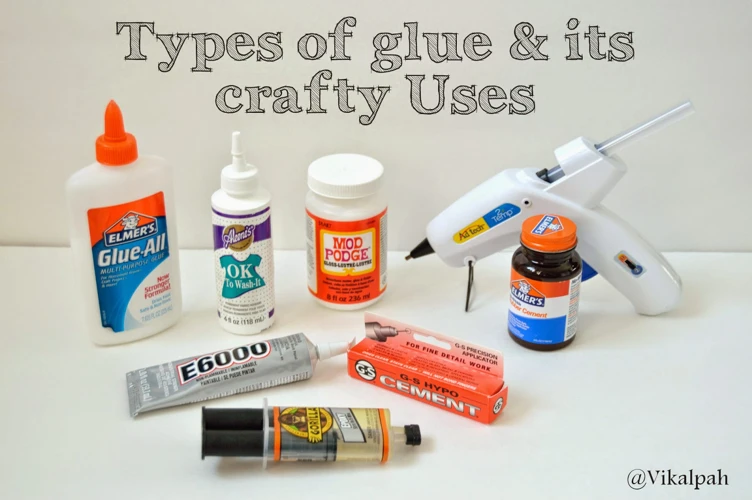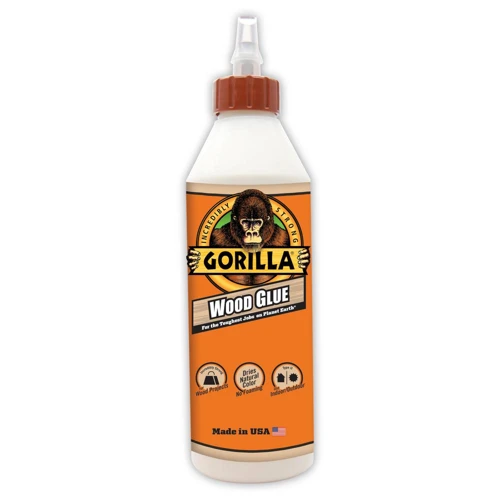When it comes to maintenance and repairs, adhesive products are indispensable. However, the aftermath often involves dealing with the sticky situation of leftover adhesive. The challenge of glue removal is ubiquitous, whether it’s a craft project gone awry or a simple label leaving its mark. The key to successful adhesive extraction lies in understanding the nature of the glue and the surface it has bonded to.
Types of Glue and Their Adhesive Properties
Adhesives come in various forms, each with unique properties that determine the approach for removal. Water-based glues, like white PVA, are easier to handle and often require just a damp cloth. Conversely, epoxies and polyurethane glues present a tougher challenge due to their chemical makeup, which is designed for permanent bonds. Recognizing the type of glue is the first step toward a clean and damage-free surface.
The Surface Matters: Different Approaches for Different Materials
The material that the glue has adhered to dictates the removal process. Delicate surfaces such as paper or thin plastic may tear or warp, demanding gentle methods. Hard surfaces like metal or glass can endure harsher treatments. Each material requires a customized approach to preserve its integrity while effectively removing the adhesive.
Safe Glue Removal from Skin
It’s not uncommon for adhesives to make contact with skin during use. While most glues are not harmful, they can be uncomfortable and unsightly. Employing safe glue removal techniques is essential, especially when tender or sensitive skin is involved.
Step-by-Step Guide to Remove Glue from Skin
To remove glue from skin effectively, start by soaking the area in warm soapy water to loosen the adhesive. Gently peel or roll the edges of the glue away from the skin, using a blunt object like a spoon or a butter knife if necessary. For stubborn spots, applying an emollient like petroleum jelly or cooking oil can break down the adhesive, allowing for easier removal without harsh scrubbing.
Non-Toxic Glue Solvents for Sensitive Skin
For those with sensitive skin, non-toxic glue solvents are a necessity. Natural oils like coconut or olive oil can be effective in breaking down adhesives without causing irritation. Additionally, specialized products are formulated to dissolve glue safely while being gentle on the skin.
Glue Removal Methods for Common Surfaces
Each surface in your home or workspace may require a different strategy when facing adhesive leftovers. From textiles to countertops, the right know-how can simplify the glue removal process.
Cleaning Glue from Fabric
Cleaning glue from fabric starts with identifying the fabric type and glue. For water-soluble adhesives, soaking in warm water might be sufficient. For stronger glues, applying a solvent like acetone (with caution) to the affected area before laundering can yield good results. Always spot test to ensure the solvent doesn’t damage or discolor the fabric.
Dissolving Super Glue from Hard Surfaces
To dissolve super glue from hard surfaces, acetone is often the go-to solution. Apply a small amount to a cotton ball and dab it on the glue, allowing it to break down the adhesive. For sensitive surfaces, alternatives like rubbing alcohol or vinegar can be used, but may require more patience and time.
Unsticking Glued Surfaces Without Damage
To unstick glued surfaces without causing harm, it’s crucial to work slowly and carefully. Heating the adhesive with a hair dryer can soften it, making it easier to separate the surfaces. Alternatively, using a thin, flexible material like fishing line to saw through the glue can release the bond without scratching or denting the surfaces.
Homemade Glue Removers
Commercial adhesive removers are handy, but homemade glue removers can be equally effective and often more economical. With ingredients from your pantry or medicine cabinet, you can concoct safe and potent adhesive dissolvers.
Natural Ingredients for Safe Glue Removal
Natural ingredients such as lemon juice, baking soda, and vinegar are not only safe for most surfaces but also environment-friendly. These pantry staples can tackle a variety of glue types, providing a green alternative to harsh chemicals.
DIY Recipes for Homemade Glue Removers
- Mix equal parts coconut oil and baking soda to form a paste that can soften and lift adhesives.
- Create a solution of two parts vinegar to one part water, apply it to the glue, and let it sit before scraping gently.
- A blend of vegetable oil and baking soda, when applied and left for a few minutes, can make removal a breeze.
Get Rid of Glue Residue Effectively
Once the bulk of an adhesive has been removed, often a pesky residue remains. This thin layer can attract dirt and grime, diminishing the appearance and feel of the surface. Effective strategies are necessary to restore the area to its original state.
Adhesive Removal Tips for Stubborn Residues
For stubborn residues, a multi-faceted approach can be the most effective. Start with mechanical methods like scraping with a plastic card or brush, followed by chemical treatments using solvents like isopropyl alcohol or goo remover. Patience and persistence are key.
How to Avoid Residue When Removing Glue
The best way to deal with glue residue is to prevent it. Using the right amount of glue and applying it carefully can minimize excess that leads to residue. When removal is necessary, act quickly before the glue fully sets, and always follow up with a thorough cleaning of the area.
Commercial Solutions for Tough Glue Removal
For the most stubborn adhesives, commercial products may be the answer. These formulations are designed to tackle a broad range of glue types and are particularly useful when time is of the essence.
Recommended Products for Different Types of Glue
Manufacturers offer specific products tailored for different types of glue, from fabric adhesives to epoxies. Review product descriptions and select one that matches the adhesive you’re dealing with for the best results.
How to Use Commercial Glue Removers Safely
Using commercial glue removers safely is paramount. Always work in a well-ventilated area, wear protective gloves, and follow the manufacturer’s instructions. Be sure to test the product on an inconspicuous area first to ensure it won’t damage the surface.
Preventive Measures and Aftercare
Accidents happen, but taking preventive steps can greatly reduce the incidence of unwanted glue contact. Aftercare is equally important to ensure that surfaces and skin remain in good condition.
Tips to Avoid Glue Spills and Mishaps
Preparation is key to avoiding glue spills. Cover work areas with scrap paper or plastic, use precision applicators, and keep wipes or a damp cloth handy for quick cleanups. Storing adhesives properly can also prevent leaks and spills.
When it comes to adhesive projects or repairs, knowing how to work with glue is essential. Whether you’re a DIY enthusiast or simply looking to fix something around the house, understanding the nuances of glue can make all the difference. For all your glue-related queries, we’ve got you covered! Learn how to get the right glue for your specific needs, discover the tricks on how to use glue effectively, and get tips on how to apply glue for the strongest hold. Dive into our resources to ensure your next project sticks the landing!
Best Practices for Cleaning Up After Glue Use
After completing a project, cleaning up promptly can prevent many adhesive removal headaches. Dispose of used materials properly, cap adhesives tightly, and store them in a cool, dry place. Lastly, wash hands and tools thoroughly to remove any residual glue.
Glue doesn’t have to leave its mark forever. With the right techniques and products, both homemade and commercial, you can tackle any adhesive dilemma. Remember, the best approach to glue removal is a combination of knowledge, preparation, and patience.


